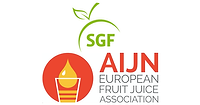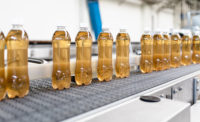How the AIJN Code of Practice Helps the Fruit Juice Industry

The European Fruit Juice Association Code of Practice (AIJN COP) is the maximum collection of reference guidelines (RGs) for 27 fruit and vegetables that contain parameters that a fruit or vegetable juice needs to comply within the European Market. The AIJN COP belongs to the AIJN—the representative association of the fruit juice industry in Europe since 1962.
Each RG contained in the COP is a masterpiece that collates information about different fruit and vegetable juices and includes information that has been the result of years of research and discussion within the COP Expert Group at AIJN.
The AIJN COP has been mentioned in countless scientific research studies and has been used as a reference for comparison of data in both the scientific arena as well as in Industry settings.
In the juice industry, the COP has helped and continues helping solve authenticity, quality, and identity issues. If you have wondered how the juice industry can identify whether a juice has suffered adulteration, such as the addition of water, sugars, etc., or what the expected Brix value in a particular fruit or vegetable juice is, the COP RGs have supplied these answers for more than 30 years. The AIJN COP is subjected to European law, meaning that it complies with the Fruit Juice Directive 2012/12/EU and is recognized by the European Commission as a model for any self-regulated industry.
How RGs Are Created and Structured
The RGs are based on extensive data collected from at least three different seasons and covering the main producing countries/areas. This data set is analyzed and highly scrutinized by the AIJN COP Expert Group at their annual meetings. Once a consensus has been reached, the material is passed to the Technical Committee of AIJN for its approval and then for final ratification by its General Assembly. It is only now that the RG is published, usually as a provisional document. Over the next few years, any comments received from users are reviewed and incorporated into the document. It is now that the RG is published in its final form. Over years of its use, changes and alterations can and are incorporated. This process ensures that the values and comments within the RG remain relevant and accurate.
The RGs are divided in two sections. Each section contains analyses for the highly distinctive parameters of a particular fruit or vegetable juice. Section A contains “Mandatory Requirements” like compositional, environmental, industry, and hygiene parameters. Section B contains “Non-Mandatory Parameters,” however relevant for the evaluation of identity and authenticity of fruit and vegetable juices.
For instance, you may want to know if a juice has suffered adulteration or if it complies with the quality parameters expected in the European market. Looking into the specific RG can help you elucidate whether the parameters in a juice product meet the expected values.
A common example of adulteration is pomegranate juice, as it is prone to be adulterated with apple juice; however, there is a typical parameter that can help determine whether this is the case. Malic acid is present in both juices; however, the levels of malic acid in apple juice are higher than in pomegranate juice. The specific RGs for both pomegranate and apple juice can help discern whether the measured malic acid values are in the expected range. However, this is just one of the many parameters than can help you evaluate identity and authenticity. The RGs also refer to isotopic values, for example, δ18O water, δ13C sugar, δ13C ethanol, etc.
However, the utility of the COP does not end there. It is indeed fair to mention that the COP data collection that helps build the RGs also helps AIJN support specific industry positions vis-à-vis the European Commission and the Codex Alimentarius.
Whether you are a juice manufacturer, retailer, new exporter of the European market, reference laboratory for the juice industry, raw material producer, bottler, juice trader, etc., the COP is a great tool that will help you to comply with key relevant European legislation and consumer expectations.
Ongoing Work
The AIJN COP Expert Group keeps working on new projects, such as:
• Continuation of the RGs for lime juice
• New RG for blueberries
• New RG for beetroot
• New RG for pumpkin
• New version of the guideline Alicyclobacillus Best Practice (ACB)
To learn more about the AIJN COP, and other AIJN work, please visit the AIJN website.
Dr. Alejandra Aguilar Solis is the technical and scientific affairs manager at the AIJN | The European Fruit Juice Association.
Looking for a reprint of this article?
From high-res PDFs to custom plaques, order your copy today!








